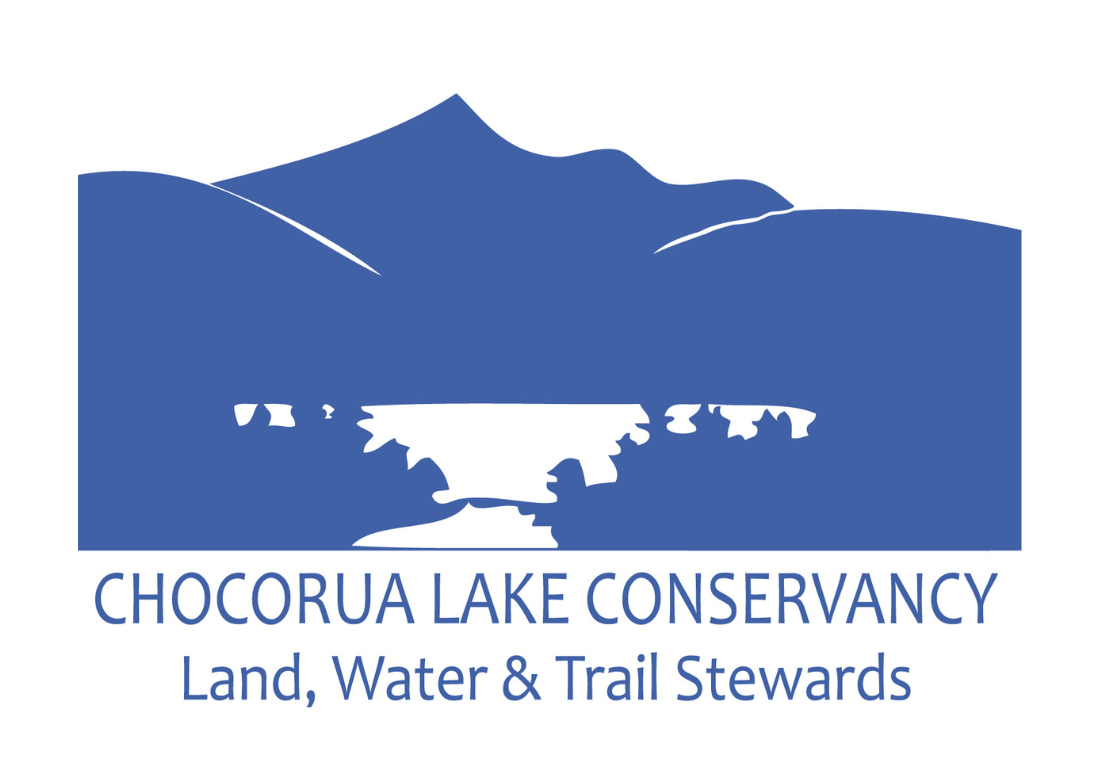Two Northern water snakes basking in the sun. Can you spot the second one!? | Photo: Debra Marnich
by Debra Marnich, CLC Stewardship Director
It was a hot, hazy July summer day on one of the most glorious lakes in New Hampshire. My husband and I and the doggo were out for a canoe paddle and a leisurely swim to chill the summer heat. We pulled over to a small island and let the girl out to sniff about. Out of the corner of my eye, I noticed a blackish figure curled up near the water's edge. Wow, I thought, a Northern water snake, Nerodia sipedon. What an astounding beauty it was! We swam and played in the lake off the island for most of the day, and gave the snake its space. The snake was, for the most part, completely unaffected by our presence, and vice versa. Together we all enjoyed the lake and island in peace and harmony in nature.
What a wonderful message in that story! Yet when I share this experience with others, it is frequently received with an alarming EEK, SHRIEK, SNAKES! Ophidiophobia is the extreme or overwhelming fear of snakes. This fear is common, leaving aside a few friends who are biologists and herpetologists. (These are people who dedicate their lives to the study, conservation, and identification of snakes, and all types of reptile and amphibian wonderment.)
The Northern water snake occupies water habitats in most of New Hampshire and throughout the Eastern United States. Identification of Northern water snakes can be a challenge for the untrained eye. They can be heavily blotched or sometimes banded, and can be brown or black with buff, tan, gray, or even orangish markings. Young snakes often have more vibrant colors and patterns. However, snakes in general tend to be misidentified and assumed to be poisonous, even though 85 to 90 percent of all snakes are non-poisonous!
Northern water snake (Nerodia sipedon). | Photo: Alex Moot
So why the common misidentification with snake species? Lack of technical training and personal experiences with snakes make accurate snake identification difficult. It's rare to see snakes on a regular basis for good reason: they prefer to be safely concealed and protected in their natural habitat—though, like many species, if they are provoked they will defend themselves. Hence, the Northern water snake is commonly mistaken for a cottonmouth (Agkistrodon piscivorus) or a copperhead (Agkistrodon contortrix), neither of which occur in New Hampshire. Water snakes are also sometimes mistaken for snakes native to New Hampshire including the milk snake (Lampropeltis triangulum) and the timber rattlesnake (Crotalus horridus).
The intricate connections in nature are both essential and consequential. All snakes provide a critical ecosystem service by keeping the natural food web in balance. Snakes are not only predators, but are also prey to some animals, defining them as mesopredators. This means that snakes are located right in the middle of the food web. They are not at the top of the food web as they fall prey to owls, hawks, eagles, skunks, otters, foxes, coyotes, and even other snake-eating species. However, they are also predators, hunting mice, fish, salamanders, and frogs. The loss of a snake species would affect all levels of the natural food web, both predator and prey, thus disrupting the entire balance. Snakes are also valuable secondary seed dispersers as they prey on many species of rodents that eat seed as a primary food source. Finally, snakes provide a valuable service of chemical-free pest control, eating rodents and keeping populations in check.
Threats to Northern water snakes include development pressures, loss of wetland habitats such as marshes, rivers, and streams, degradation of water quality and habitat in lakes and ponds, loss or degradation of vernal pools, habitat conversion, climate change, transportation systems such as roads, mining, pollution, illegal pet trade, misidentification, and unjust harm/pressure from humans.
My efforts in snake conservation are always focused on providing a real-life experience with a combination of safe exposure and education. Unconditional love of snakes may be a towering goal for many, but understanding the importance of species function in the ecosystem and its value is paramount and certainly achievable. See below for a list of websites where you can learn more about identifying, understanding, welcoming, appreciating, respecting, and honoring snakes in the environment.
Learn more about these beautiful creatures:
https://www.wildlife.nh.gov/wildlife-and-habitat/species-occurring-nh/northern-water-snake
https://blog.nature.org/2019/10/16/a-field-guide-commonly-misidentified-snakes/
https://www.snakesforpets.com/what-would-happen-if-snakes-went-extinct/
https://www.nwf.org/Educational-Resources/Wildlife-Guide/Reptiles/Northern-Water-Snake
https://scarab.bates.edu/cgi/viewcontent.cgi?article=1000&context=biology_theses
Banner image: Northern water snake. Photo: Sandra Ringlestein

